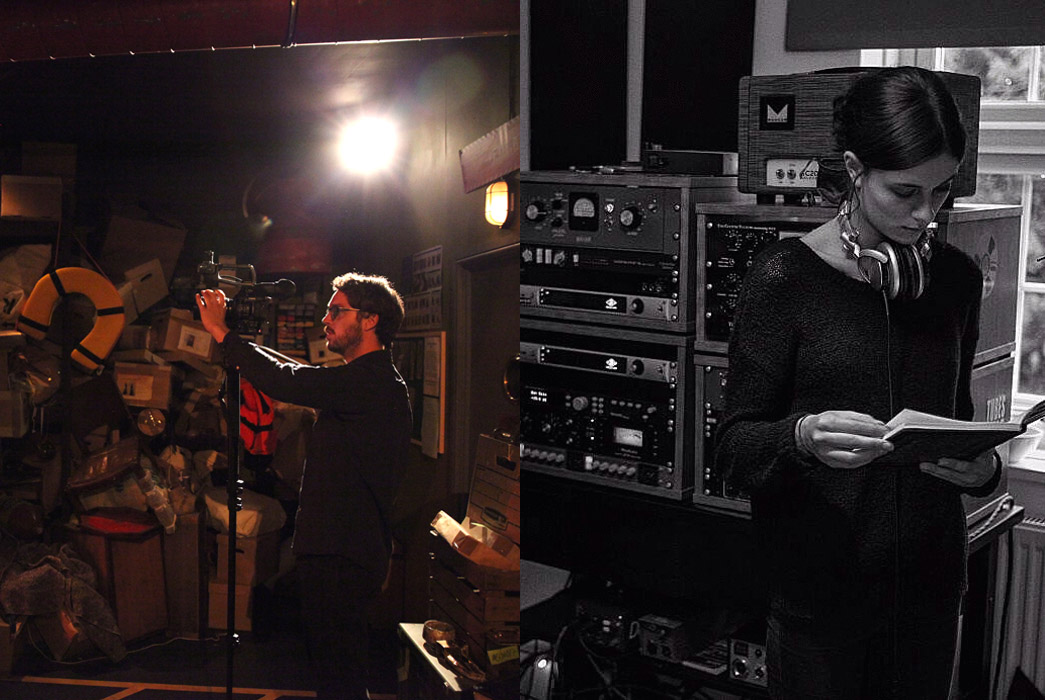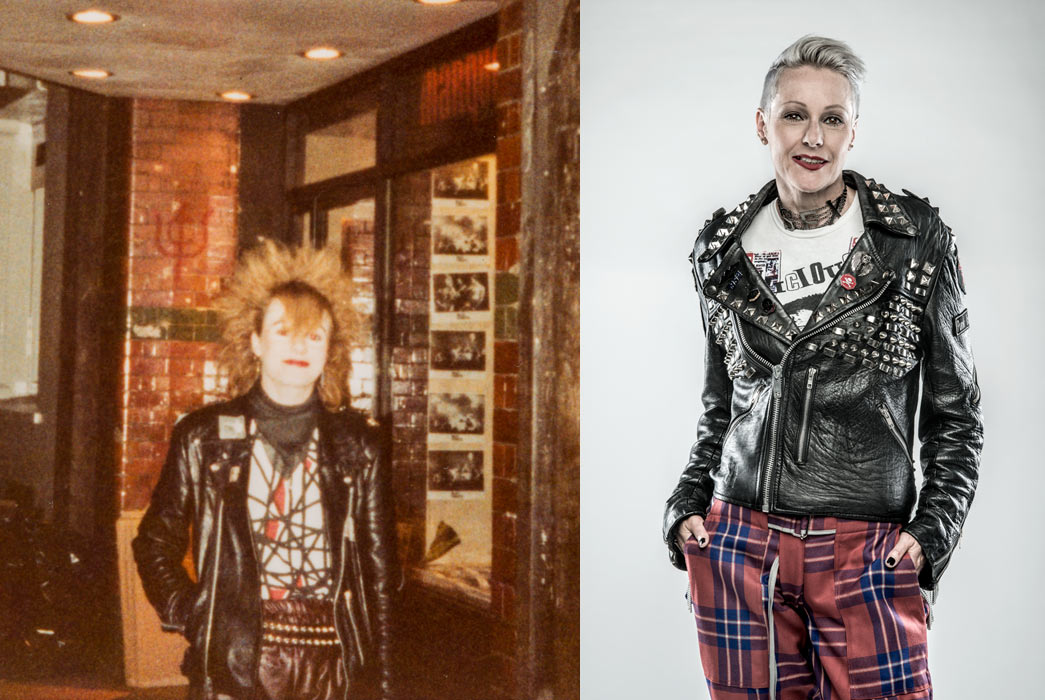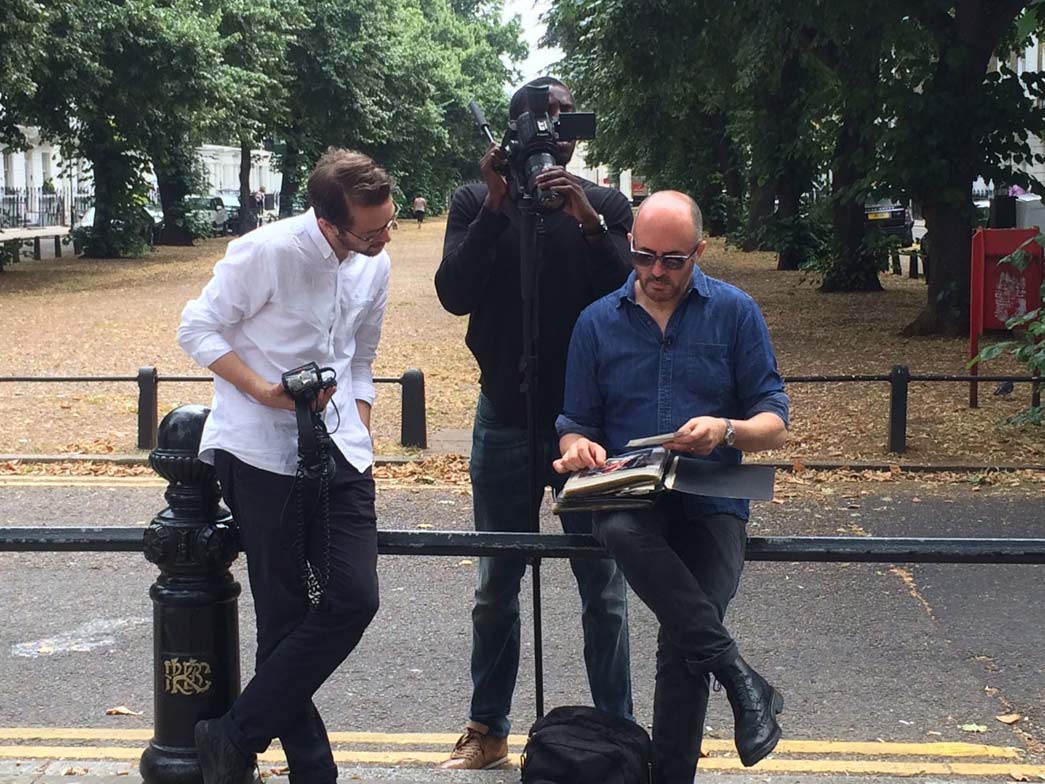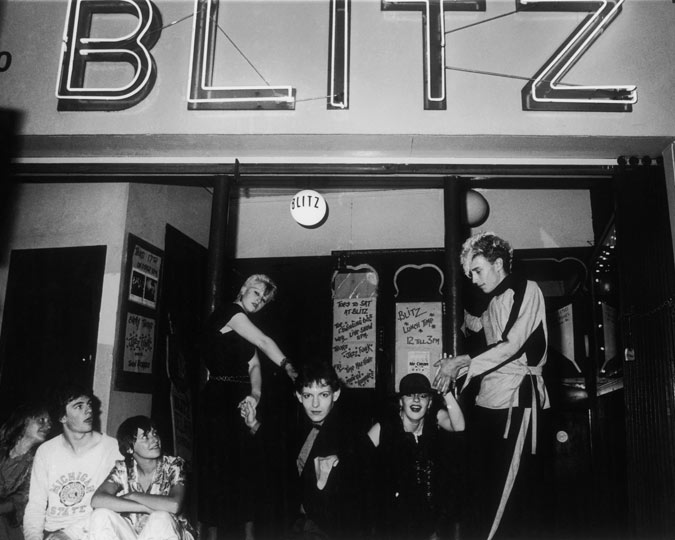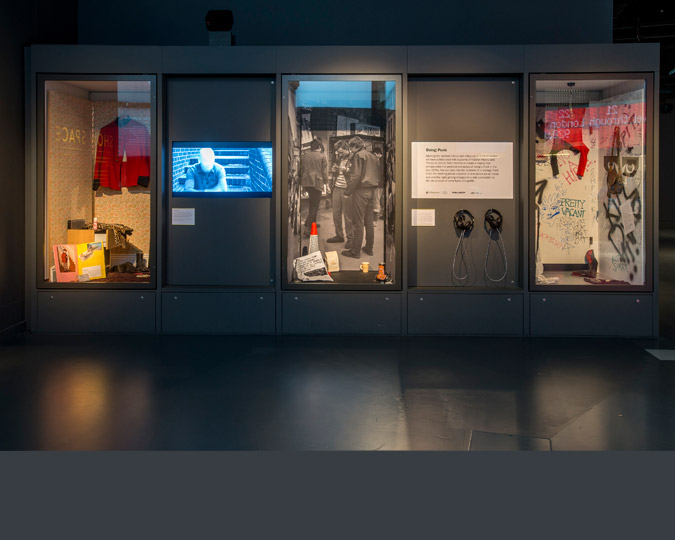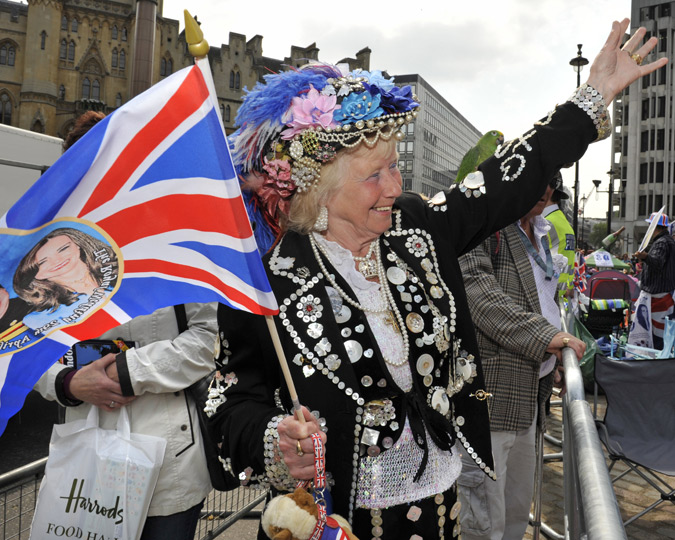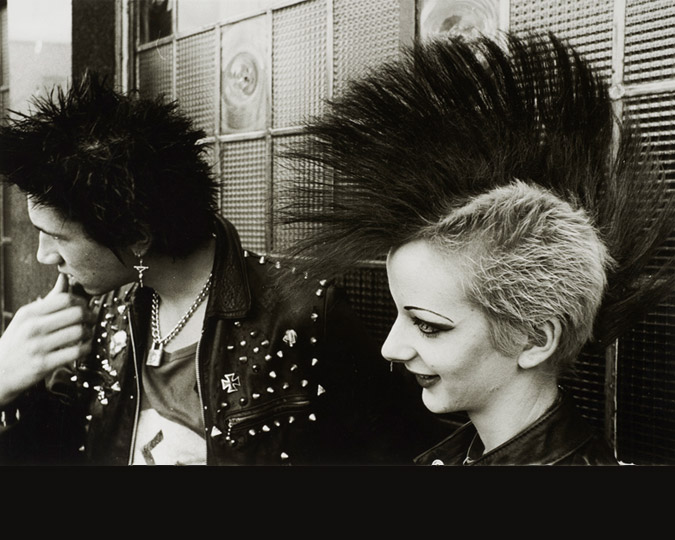This year, Punk.London celebrates 40 years of music, fashion, and life in the city. The Museum of London has commissioned two new documentary films, Punks parts one and two, which feature interviews with former punks in iconic venues across the city. Watch them now, visit our Punks exhibition, or read a behind the scenes take from the filmmakers below.
Helena is a producer for Chocolate Films and a musician herself. Her favourite punk track is Hybrid Moments by Misfits.
Ross is a cameraman and director. He wrote the scripts for the Punk films, also visible in the upcoming Punks exhibition. Ross’s favourite punk track is Train in Vain by The Clash.
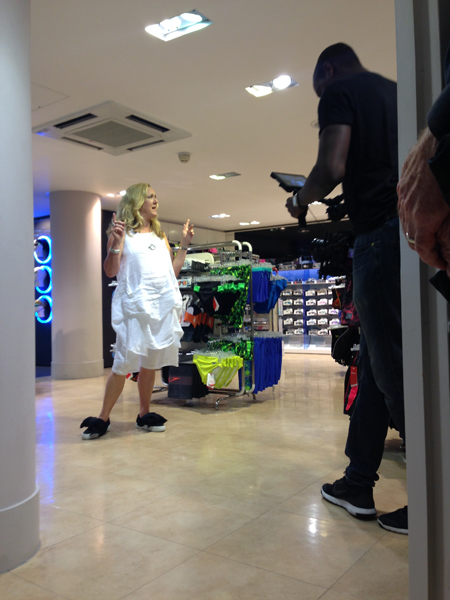
Selena Quirke in the former Roxy
The Covent Garden punk club is now a sports shop
Can you tell us about the practical challenges of making a film about the Punk movement – a difficult-to-document explosion on the music scene some 40 years ago?
Ross: I feel like I’ve seen quite a few documentaries about punk music, but they all seem to tell the same story and feature the same musicians. So for me the challenge was finding a new angle, which is difficult when the era was so brief. We therefore decided to make the film about the fans, and their experiences of the scene at the time.
A big issue was that most of their memories were in places that are now unrecognisable. For example, The Roxy, the ground-breaking club, is now a Speedo store, The Rainbow is now a church. We got around this by embracing the changing geography, and making this aspect a part of the story. So we interviewed Selena walking around inside the Speedo store, filming her as she remembered where everything was. We couldn’t gain access to the church however, so we decided to turn this challenge into something positive and include the part of Dave’s interview where he makes a joke about not being allowed in.
Could you touch on the research and filming process itself?
Helena: Carrying out the research for these films was an enlightening process. Each person had such a different story to tell and a different perspective to give. It’s always fascinating to see how different people experience the same thing in such different ways. I also loved trawling through Kinolibrary’s archive footage and finding the best bits, and going round to people’s houses for cups of tea and to scan in their photos! The filming process was great fun to be a part of too. The shoots were all really varied and different, so preparing for them and then seeing everything come to life was really exciting.
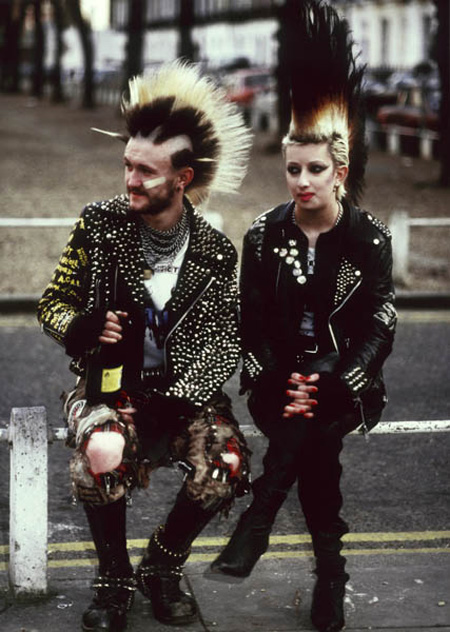
Punks in Wellington Square, Chelsea
Photograph by Anna Koffman, 23 February 1985; ID no. IN16873
What did you learn about the punk scene and music whilst making these films?
Ross: I’ve been into punk music since a young age (well maybe more pop-punk as a young teenager, like Blink 182, Green Day, NOFX, or Rancid). Then as I got older I started discovering the bands that influenced them (The Clash, Sex Pistols, Ramones, Buzzcocks, Stiff Little Fingers…). I didn’t know anything about the geography of punk music though, or the significance of the King’s Road or the venues around London.
I think it helps if you aren’t an expert on a subject when you start making a documentary, as you can be dismissive of simple things that most people might find interesting. It was therefore a really fun and exciting learning process for me too.
Helena: I learned that the barrier between the performers and the audiences were not very defined. Selena’s stories about cutting band members' hair in the loos of The Roxy really stood out to me. Also, I found out that most venues had really low or even floor stages - that gave me the impression that it was a pretty inclusive music scene - everyone just wanted to have fun!
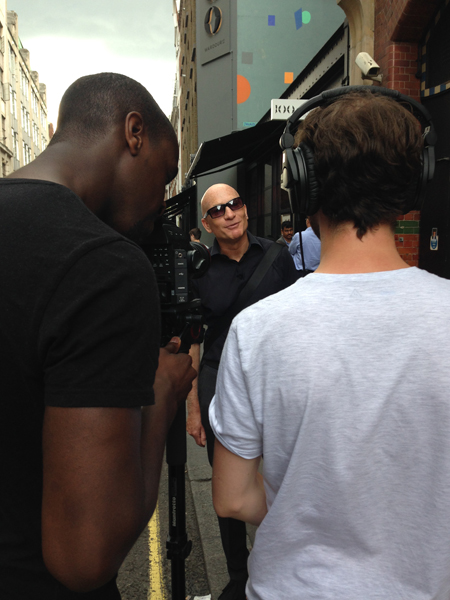
Former punk Paul Horobin being interviewed
How did you use film
to capture the feeling of punk music? Were there any moments of filming that
were personal highlights for you?
Helena: Shooting the interviews as tracking shots means that the
footage is rarely still and we think this really captures the spirit of punk -
the restlessness and fast paced nature of the lifestyle and the music.
Ross: We also interspersed the films with erratic point of view camera shots, which was about 2 days worth of filming condensed to a few minutes! We used a new handheld Osmo stabilizer camera, which garnered some funny looks from passers-by. This actually worked to our advantage, as it feels like people are looking at the camera as if it’s a scary punk.
Were there any stories that didn’t make it into the finished films?
Ross: We knew in advance the specific stories that we wanted each contributor to tell, but as the interviews progressed they would always allude to other memories… getting arrested for suspected prostitution, getting punched by teddy boys, spending the night in the cells - it was very hard to decide on what to edit out!
Punk.London ran from 1 October 2016 – 15 January 2017








